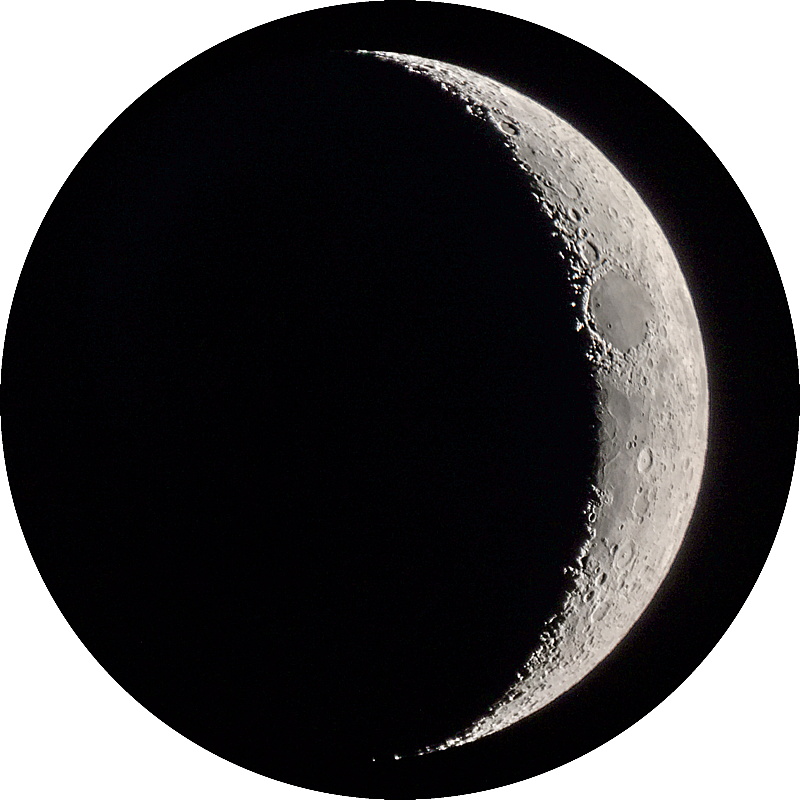ETX-125 Observer; Globular Clusters; NEO 2017 CS;
SkyTracker Pro North American Nebula, Milky Way
Posted: 29 May 2017
|
Open: Sunday, 28 May 2017, 1900 MST Temperature: 92°F |
Session: 1116 Conditions: Clear |
Equipment Used:
12" f/8 LX600 w/StarLock
2" 24mm UWA eyepiece
ETX-125 Observer
1.25" 26mm eyepiece
1.25" 2X Barlow Lens
1.25" 9.7mm eyepiece
SkyTracker Pro
Camera:
iPhone 6s Plus
D7200 DSLR
Set up the ETX-125 Observer telescope and the SkyTracker Pro on the observatory patio:

Click or tap on image for larger version
1920 MST: LX600 ON, StarLock OFF, High Precision OFF.
1922 MST: viewed the Moon in the 12" telescope, 102X.
1923 MST: Wi-Fi ON. Did some ScopeBoss tests. 1929 MST: Wi-Fi OFF. Ended tests. Then relaxed for a few minutes on the patio bench.
1950 MST: ETX-125 ON. 1954 MST: saw the first Kissing Bug of the night (on top of the dome). It was terminated a little later. 1956 MST: viewed the Moon in the ETX-125 Observer, 73X.
Mounted the iPhone 6s Plus on the ETX using the Levenhuk Smartphone Adapter and used the iOS app NightCap Camera for this afocal 73X image:

Added a 2X Barlow Lens for this image of Mare Crisium, afocal 146X (Camera app):

Then viewed Jupiter, 146X. The four Galilean Moons were nicely visible. Took this afocal 146X image of Jupiter using NightCap Camera:

Viewed Jupiter, 196X. 2040 MST: ETX-125 OFF.
2052 MST: returned to the 12" telescope and took a final look at the Moon and then Jupiter, 102X.
2130 MST: began preparing the D7200 DSLR for prime focus + focal reducer imaging. Slewed to M9 (globular cluster), which would be the first target once it was above the tree to the southeast.
2140 MST: did some sky observing from the patio using 12x50 binoculars.
2208 MST: returned to the 12" telescope. Viewed the globular clusters M9, M19, and M62, 102X, but they were still a little too low in the sky to image.
2230 MST: mounted the DSLR at prime focus + focal reducer, focused on Antares, and locked the primary mirror. 2238 MST: StarLock ON. Took these StarLock autoguided, 30 seconds, ISO 2500, White Balance 3570K images, of the three globular clusters:
M9

M19

M62

2251 MST: Wi-Fi ON. Used SkySafari 5 Pro on the iPhone to GOTO Near Object Object (NEO) asteroid 2017 CS. This is a StarLock autoguided, 1 minute, ISO 6400, White Balance 3570K, image:

Mouseover or tap on image for labels
Got lucky to have included the galaxy NGC5267 in the field-of-view.
Then used SkySafari Pro to GOTO the star KIC 9832227 (GSC 3543-1211), which is predicted to go "nova" in a few years. Took this StarLock autoguided, 30 seconds, ISO 5000, White Balance 3570K, image showing the star field:

I attempted to ID the star, which should be near the center, but was not successful. Will have to wait for it to "blow".
2316 MST: StarLock OFF, Wi-Fi OFF. Removed the camera from the 12" telescope. 2324 MST: LX600 OFF.
2327 MST: terminated the 8th Kissing Bug of the night.
Mounted the D7200 DSLR on the SkyTracker Pro and polar aligned the tracker. Focused on the star Deneb using a lens Bahtinov Mask. Took this tracked f/5.3, 2 minutes, ISO 5000, FL 80mm, image of the North American Nebula (NGC7000):

Then aimed the DSLR at the core of our Milky Way Galaxy and took this tracked f/3.5, 2 minutes, ISO 5000, FL 18mm, image:

Click or tap on image for larger version
0005 MST: ended imaging.
|
Close: Monday, 29 May 2017, 0017 MST Temperature: 68°F |
Session Length: 5h 17m Conditions: Clear |
Comments are welcome using Email. Twitter users can use the button below to tweet this report to your followers. Thanks.
Cassiopeia Observatory Home Page
Copyright ©2017 Michael L. Weasner / mweasner@me.com
URL = http://www.weasner.com/co/Reports/2017/05/29/index.html
